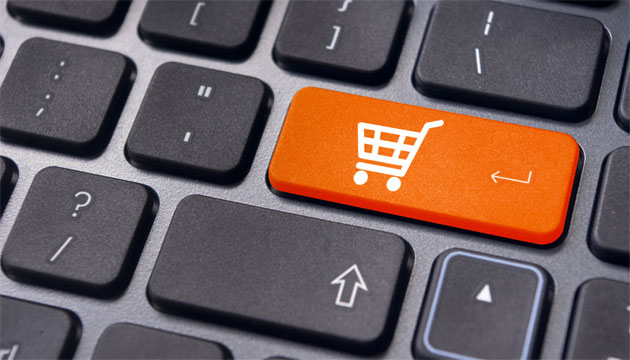You have an online an shop, a pretty nifty design and of course a great product, but for some reason you’re not seeing the E-commerce conversion you thought you would when you went live.
You spend countless sleepless nights racking your brain for that magic moment, that moment of clarity when you realise what’s wrong and, more importantly, how to fix it… You convince yourself it’s the length of the checkout process but then you scare yourself thinking hang on, it has to be where you’ve placed your calls to action, maybe they’re not strong enough, oh god they’re not strong enough!!
If you’re still reading this, that means you know the feeling, or you know someone who’s currently panicking. The good news is that it takes just 6 easy steps for you to get back on track and more than anything get those conversions coming in thick and fast. Read on my friends.

Brand value
It may sound like a really basic question, but what makes your brand unique? What’s your USP? Why are you so different to your competitors?
However much these sound like those bog standard interview questions you’d have back in the day, there’s a certain truth in taking a hard long look at yourself and answering that ‘who even am I?’ question. The same goes for your brand.
So for instance, you sell shoes, and they’re unique because they’re quirky. Good as a top line of what your brand stands for, but take it further to get to the core of the value. They’re quirky because they’re inspired by nature (I’m improvising here) from design right through to the materials used, why, because you find nature inspiring and you live by that.
Now, boom, that’s your value proposition. You don’t just sell shoes, you sell the very product that keeps you grounded to nature. This is why you’re unique and this is more importantly, what you need to push out online.

Assets
What can you offer your online consumers apart from the product you sell?
I know it sounds like a tricky one, but I think if you look at your E-commerce shop as an actual physical store you’ll see that you have a load more to offer than just your product.
So for instance, if you have an amazing Instagram following or that your biggest achievement is providing excellent customer service, these are all assets you can draw on.
Remember, your brand online is the whole package. It’s the experience you create online and translate offline. Once you’ve listed down what makes your brand absolutely fabulous darling, it’s time to start thinking about how you’d draw on these assets and push them out to your target audience.
Audience
Who are your target audience? Who are going to buy your nature inspired shoes?!
Exactly, your audience. Who are they? Yes, we all love shoes. But it’s no good just saying, ‘oh yes, we market our brand to women of all ages.’ You need to know who your target buyers are? Are they the professional ladies about town or the millennial mums; juggling, home, school and work?
Now, even if there is an overlap between multiple groups, it doesn’t matter. You see, once you start segmenting your target audience into groups, you’ll begin to see the face, personality and traits that make up the characteristics of each group. By this point, you should have a number of segmented lists to make up your target audience.
It shouldn’t stop there, because you NEED to be proactive. Channel your inner networker because it’ll be all about identifying key influencers in each target group. Again, they could be shoe bloggers, mums meet-up groups or online fashion magazines. If you know your market, you’ll know who to target, suddenly, Excel is your best friend!

Channels
Ok I know who they are, I know what they like but where are they?!
Assuming you’ve got your audience segmented and your key influencers listed, you’ll need to start thinking about how you can reach your audience. Our one pet peeve (very laid back, you see) is when agencies think that simply pushing out blogs on social media would cover a brand’s entire traffic. Yes, social is an important channel, but it shouldn’t be used as the be all and end all, and more than anything, there is also a strategy to working social to boost your brand’s ROI (but hey that’s for another day).
So again, whether your channel is a Facebook group, a community forum, a specific individual on LinkedIn, an editor you can approach via an online blog, the next step is to marry up your segments, with specific channels and to start thinking about the next important step…

Engagement
How can we get them interested and in the spirit of Queen B it’s time to put a ring on it…
So this is the game changer stage. And one sure fire way to ensure greater engagement is to devise a content calendar which will cover all your online offerings and push them through to your targeted audience through the channels you’ve identified. Again, as with the above steps there is a certain logic and science behind this step and tapping into consumer psychology is the crux of it all. Remember the blog we wrote some time ago about building links?
I’ve always thought of each part of a content calendar as a campaign in itself, from promotions on Facebook through to targeted newsletters to one of your segments. The key is by honing in and really tailoring your offerings to your audience adds value, and who doesn’t like that.
What is important here is to consider the metrics you’d like to measure each campaign against. It could be ‘Facebook promotion campaign to result in increasing your page likes by 10%’ whatever it is, set the benchmark, and focus on building your brand’s community.

Conversion
Boom time to measure!
After all of that, get out the rulers! Okay, so maybe just your analytics account at this stage. It’s time to measure how each campaign did. Like I said above, engagement isn’t and shouldn’t just be marked against a wham bam thank you sale. It should be a mixture of both macro and micro conversion.
You may want to measure a social media campaign by the number of shares and posts you received or whether your brand was featured in an online magazine. The point here is each step forward is a brick laid into the foundation of cementing your brand online.
So use these stats and returns as benchmarks for your next month of next quarter. Trust me, you’ll learn quickly what works and what doesn’t, you might even find a new audience in the making.

Finally
The whole process is an onion, but an important onion at that. Each layer has a purpose and that’s why it’s so SO important to have a strategy in place. Not to scare you or anything, but if you want to build a brand that lives past a year of going live, you’ve got to think strategy. Put simply, it could be the deciding factor of leading the way or being left behind! But hey hey now, you can always count on us for a happy ending…
Originally published: Your E-commerce marketing strategy in just 6 simple steps!
(252)
Report Post






